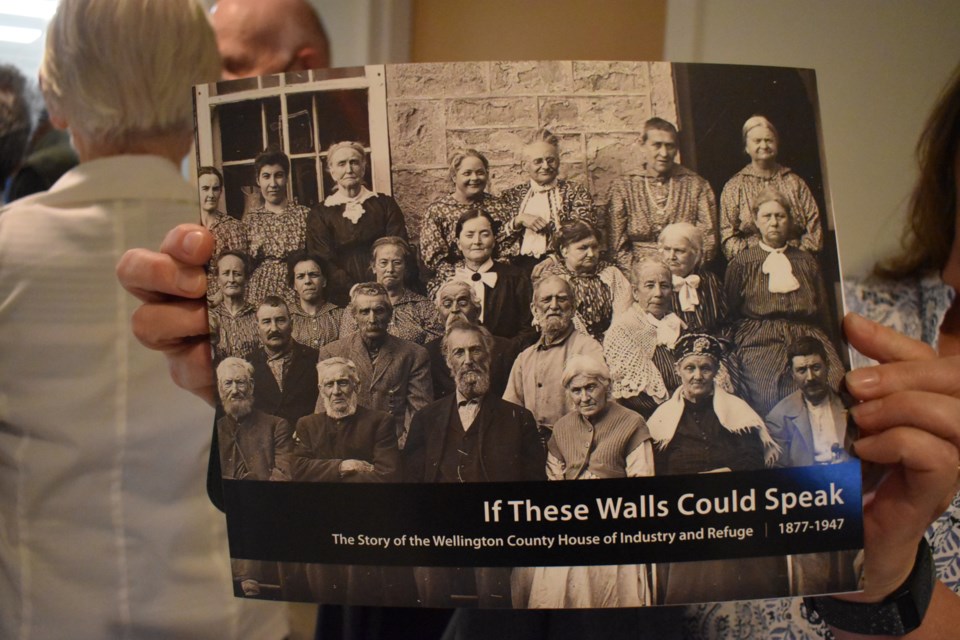ABOYNE – If the walls of what is now the Wellington County Museum and Archives (WCMA) could talk, they might tell a thousand stories. A new book by a past WCMA curator seeks to share some of them.
Well over 100 years ago, the impoverished, single mothers, disabled, severely ill, aged or those with no place else to go would cross the doors of a large institution sitting between Elora and Fergus and see the words "County Poor House."
Countless people would pass through those doors and live in what was officially called the Wellington County House of Industry and Refuge which first opened in 1877 and operated as such until 1947 before becoming the County Home for the Aged and later the WCMA.
Susan Dunlop, author of If These Walls Could Speak: The Story of the Wellington County House of Industry and Refuge, launched the new book at a Thursday evening event at the WCMA.
Dunlop told the crowd the book is a companion piece to the award-winning exhibit of the same name with the same goal in mind.
“We wanted to explore in more depth the early experiences of rural poverty and poor relief that still influence our attitudes and policies to this day and tell it through the personal stories of those who lived here,” Dunlop said.
The process certainly wasn’t an easy one for Dunlop, who explained research like this is like a jigsaw puzzle with missing pieces. She described having to pour over countless records, registers and documents to find out who were the 'inmates' — a historical term referring to anyone who lived in a public institution prior to resident becoming the accepted term — and workers at the poor house.
Who she discovered were people like Joseph Bennon of Fergus, the first admitted inmate convicted of begging without permission, or Julia Everson of Harriston who first came as a 7-year-old and remained there until she died in her 60s.
Dunlop said a lot of these people were marginalized and likely didn’t think anyone would want to hear their voices.
“There’s about 60 people on the front and on the back (of the book) and they would be astonished we are here tonight, they wouldn’t believe that we are interested,” Dunlop said to a crowd of over 100 people.
Of the nine rural poor houses that existed in Ontario, Dunlop said this one may have been one of the better documented ones due to the interest of Elora’s John Connon, a noted photographer, who often took photos of inmates or workers there. It is also the oldest standing poor house which Dunlop said was saved from demolition after being condemned due to the lobbying efforts by the of the Women’s Institutes and the County Historical Society
“Much of the story of the county’s poor and vulnerable would have been lost without this building,” Dunlop said.
There’s still much historians don’t know about the people in the building and to Dunlop the jigsaw puzzle remains incomplete.
She closed her speech by highlighting a man from the cover who she is drawn to. She doesn’t know his name or any specific details about him but she believed him to still be with us.
“I think he is still with us in our long-term care facilities, in Wellington Hospice, in a shelter or supplementing his pension with visits to the food bank,” Dunlop said. “The people of the poor house were invisible to many but we can catch glimpses of their lives in the midst of the puzzle that we can piece together. We can hear their voices, we just have to keep listening.”
